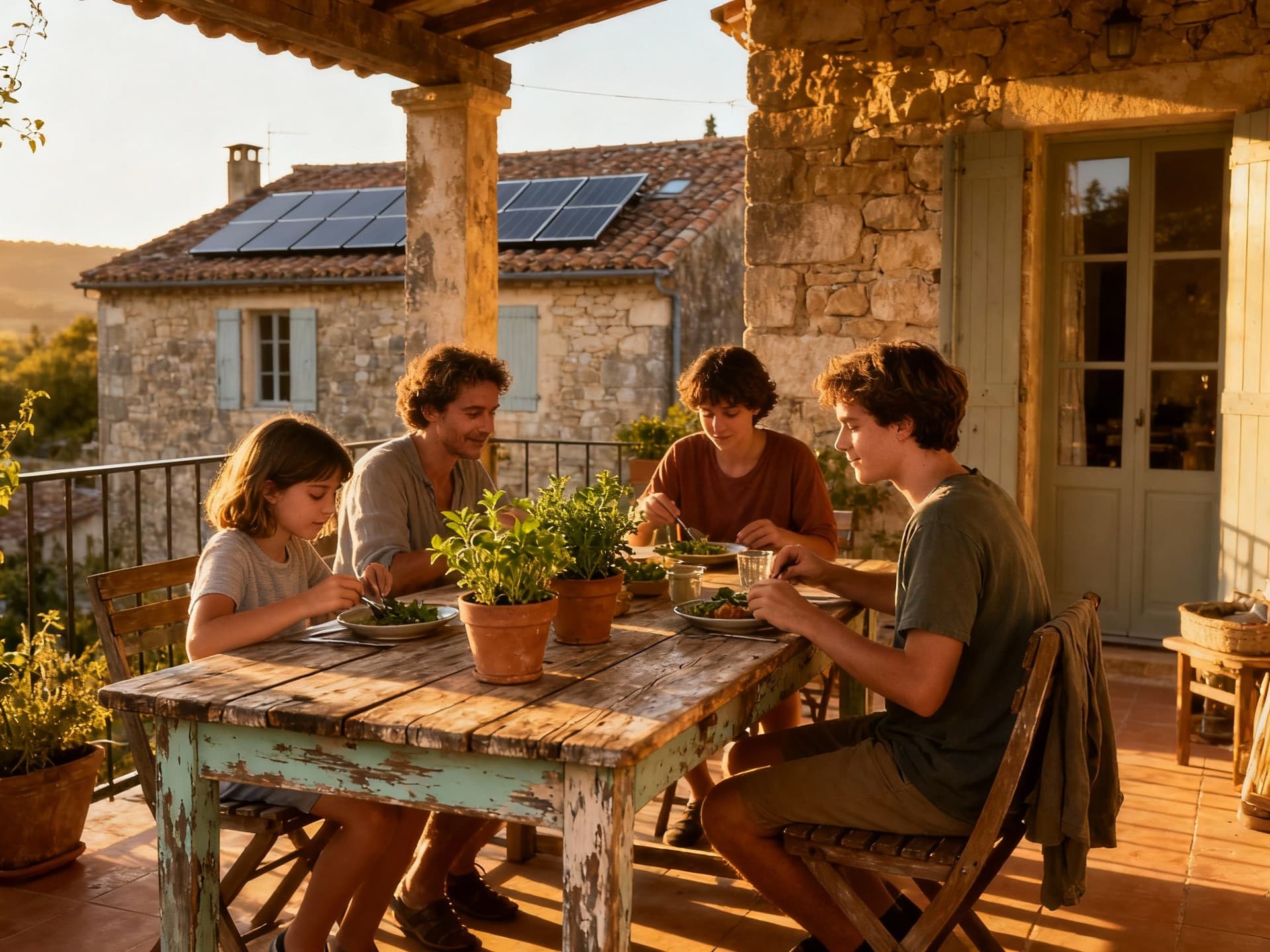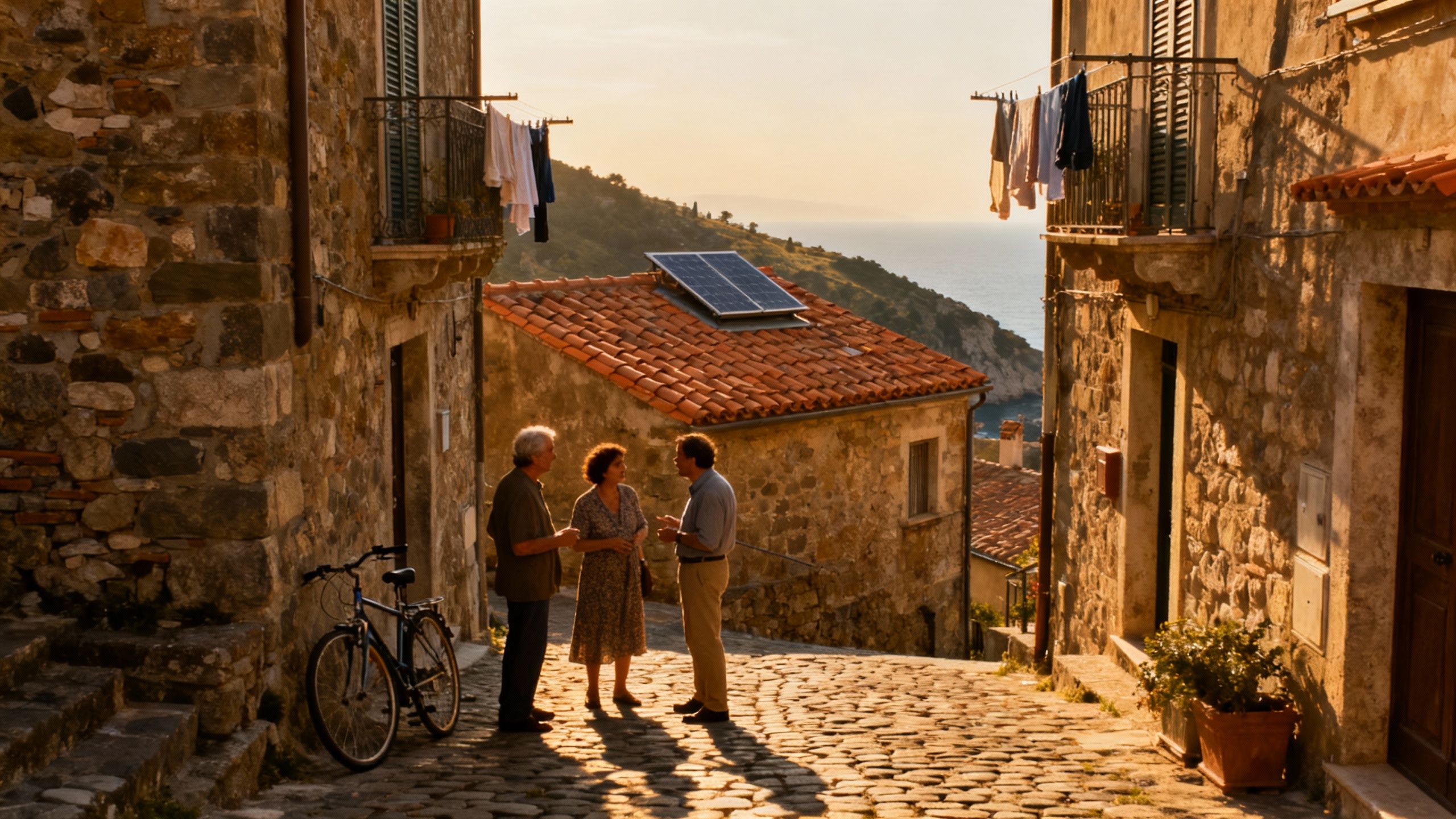Where France’s Green Grid Meets Daily Life
France’s green infrastructure quietly reshapes lifestyle and value — pair seasonal living with local energy checks to find a home that’s beautiful and low‑impact.
Imagine walking at dawn through a Provençal market, the light warm on limestone façades, then later cycling past fields of solar panels soaking the same sun that warms your terrace. That tension — between centuries-old rhythms and a very modern green grid — is France today. For buyers who want beauty and systems that support a lower‑impact life, the country’s patchwork of renewable infrastructure, getting broader every year, quietly reshapes where sensible, sustainable homes sit.
Living the French life — slow mornings, green systems

Morning routines in France still begin with a coffee and a market run; what’s changed is the background hum of energy transition. In towns from Poitiers to Nice and along the Loire, community-scale solar, renovated stone houses with added insulation, and municipal heat networks are becoming part of everyday life. These green threads make living here quieter, cheaper to run in many places, and oddly more rooted — your house is part of the village’s ecosystem rather than an isolated asset.
Neighborhood spotlight — Bordeaux & Île‑de‑France contrasts
Bordeaux’s vine-lined outskirts and Paris’ commuter towns show opposite faces of French life. In Bordeaux you’ll find restored stone farmhouses retrofitted with heat pumps and PV arrays; in Île‑de‑France, small towns closer to transport hubs are adding shared battery storage and district heating pilots. Both offer different daily rhythms: vineyard light and quiet versus weekday connectivity and fast cultural access.
Food, markets and seasonal living
A Saturday in France remains sensory: cheeses stacked at Marché des Enfants Rouges in Paris, oysters on the oyster stalls of Arcachon, or chestnut stands in autumn in the Cévennes. These seasonal cycles shape how you use a home — outdoor kitchens for summer, compact warm interiors for winter — and they also influence value: homes with provenance gardens, south-facing terraces, and sheltered courtyards tend to keep their appeal and require fewer energy interventions.
Making the move: practical considerations where life and green infra meet

Dreams meet paperwork here. The good news: market momentum has picked up after 2024’s slowdown, with Notaires data showing recovery and pockets of price growth — but the market is patchy, so your location choice matters for both lifestyle and the green features you can realistically rely on. Use lifestyle needs to guide technical checks: does the village have a district heating plan? Is the local grid friendly to household solar exports? Answers change your running costs, comfort and long‑term stewardship.
Property styles: what suits a low‑impact life
Stone village houses, renovated longères in the Loire, and Provençal mas all lend themselves to passive upgrades — thick walls, shaded courtyards, and integration with landscape. Newer builds in cooperative eco‑hamlets bring guaranteed PV and greywater systems but can command a premium. Think: do you want the slow romance of retrofit (lower embodied energy) or the convenience of ready-made efficiency?
Working with agencies who understand green lifestyle
Look for local agents who speak both place and systems: they should know village planning for solar, local incentives for heat pumps, and where municipal grids will accept home storage. A good eco-minded agent connects you to artisans for lime-plaster insulation or local photovoltaic installers and helps translate lifestyle priorities into feasible technical steps.
Six steps to marry lifestyle and green practicality
1) Prioritise south-facing exposure and sealed thermal envelope. 2) Verify local grid rules for PV exports and battery connection. 3) Ask sellers for energy renovation receipts (heat pump, insulation). 4) Check local incentives and municipal plans. 5) Budget for landscape-based water management. 6) Tour homes at different times: morning market days and quiet mid-week evenings reveal practical realities.
Insider knowledge: expat truths, seasonal surprises and red flags
Expats often romanticise Provence or the Côte d’Azur without checking seasonal strains: tourist seasons swell services but can stress water and waste systems, while winter reveals heating weaknesses. Locals’ choices — small gardens, shared wells, and community composting — point to what matters. Watch for crumbling roofs with recent insulation, or homes connected to overtaxed septic systems; these are the practical red flags that degrade green living fast.
Cultural integration and daily community life
French social life happens locally: boulangeries, Thursday markets, pétanque evenings. Learn a few phrases, show up at communal festivals, and you’ll be invited into the reciprocity that keeps village-scale projects alive — from solar co-ops to shared orchards. Integration speeds repairs, lowers costs, and makes stewardship joyful rather than bureaucratic.
Long-term lifestyle: what five years in looks like
Five years after moving, owners who invested in passive improvements and local networks report lower utility bills, active community ties, and a garden that feeds them seasonally. Homes that ignored drainage or local infrastructure, by contrast, face recurring repair cycles. Think long-term stewardship: the property that fits your life is the one that fits the local ecology.
Practical checklist before making an offer: local energy permits and grid acceptance, recent energy bills and renovation receipts, proof of community services (waste, water), insulation/roofing history, and a clear plan for biodiversity (native planting, runoff control).
If you want to fall in love with France and actually live the slow, green life here, begin with a season: spend a market week in the town, ask about local energy plans, and meet a local builder. Agents who understand both the cultural rhythm and the technical details will be your best translators — not just of language, but of possibility.
Next steps: visit with intent, collect energy and renovation documents, and prioritise properties that already show respect for landscape and systems. When you find that sunlit terrace with a nearby farmers’ stall, you’ll know you’re not buying a postcard — you’re joining a living place.
Danish relocation specialist who moved from Copenhagen to the Algarve; supports families with seamless transitions, local partnerships, and mindful purchases.


